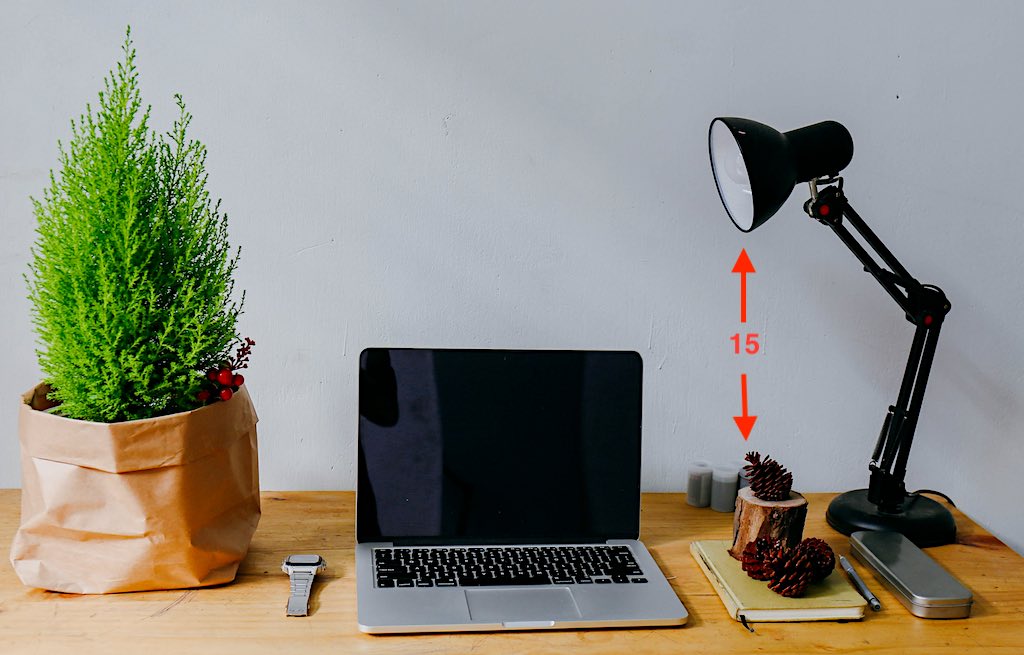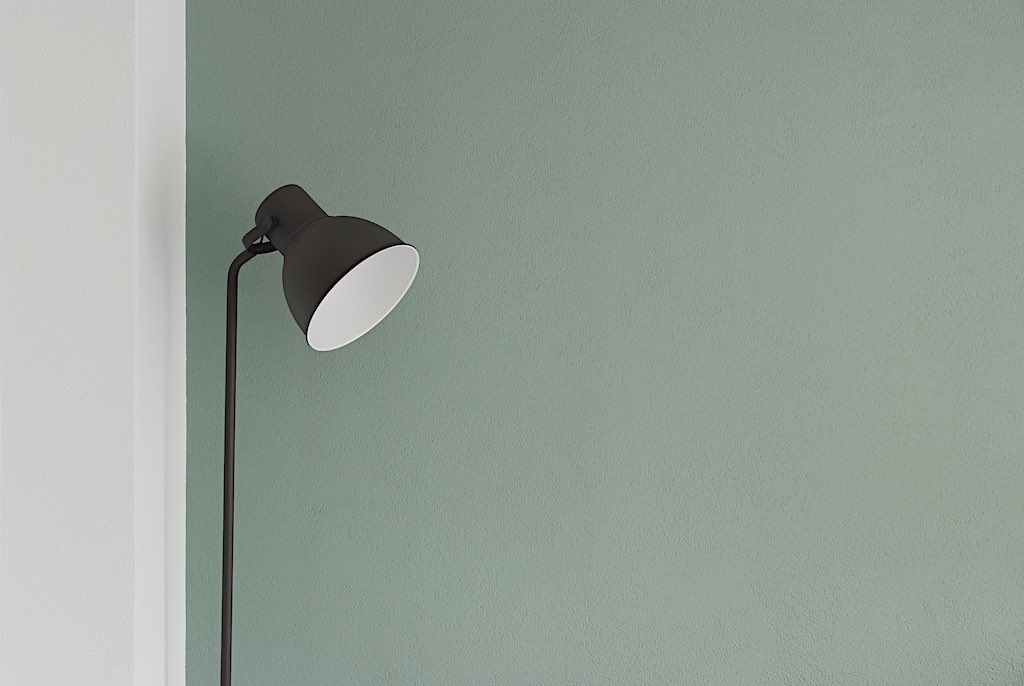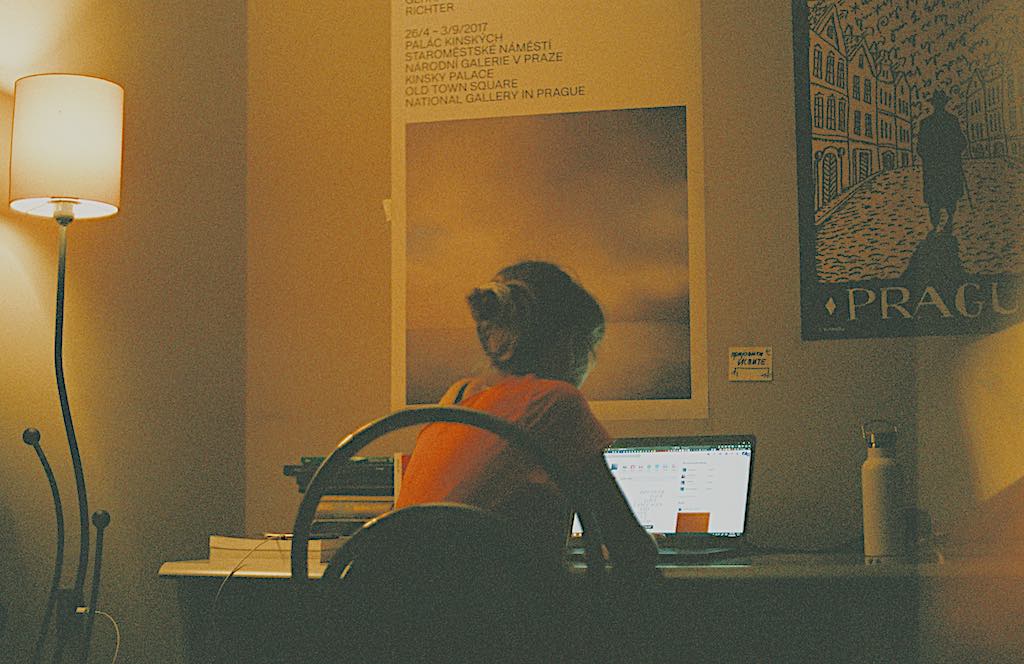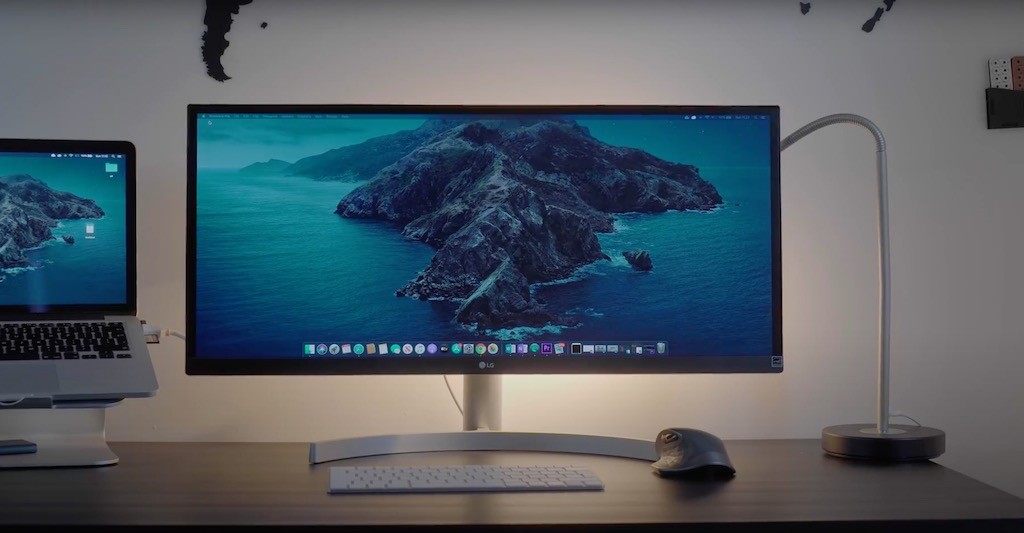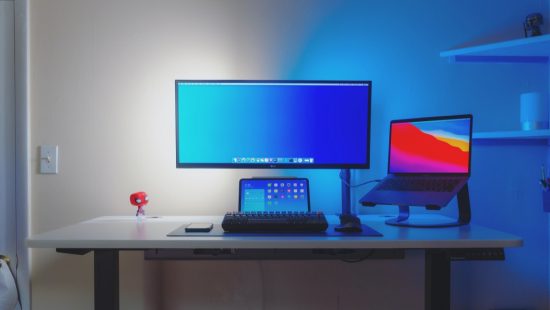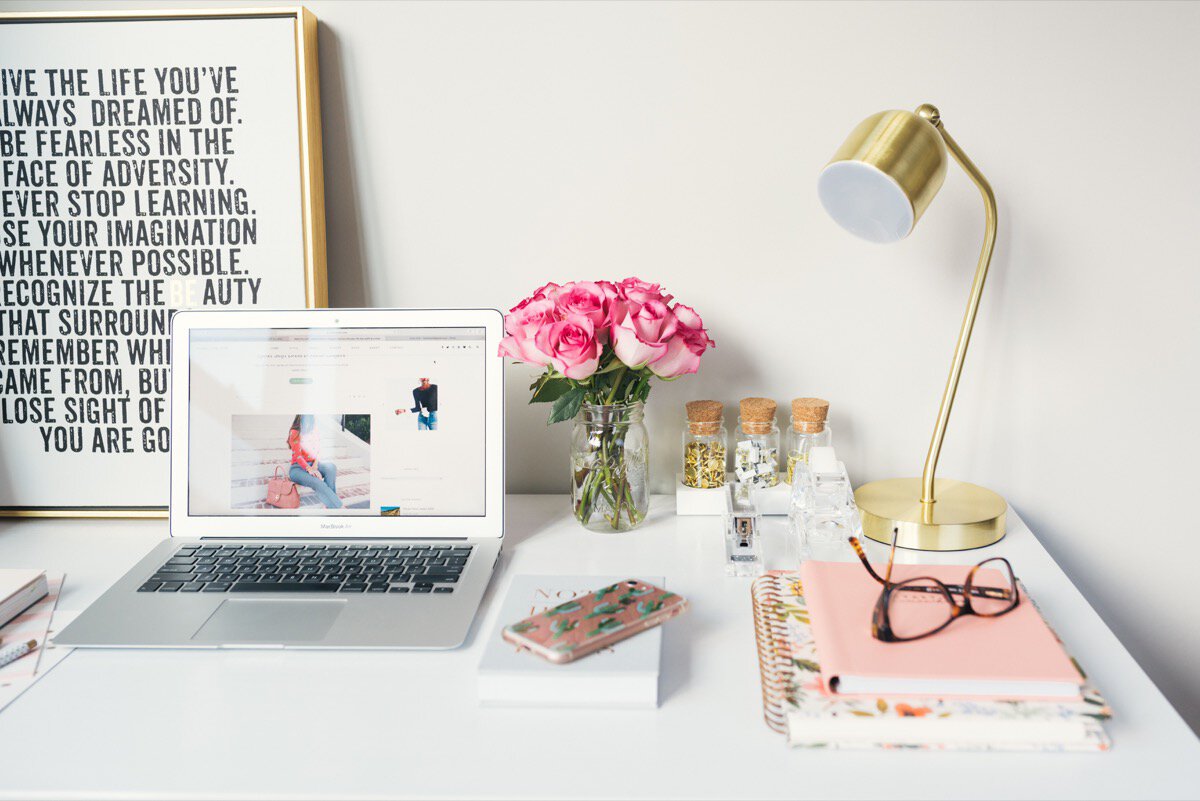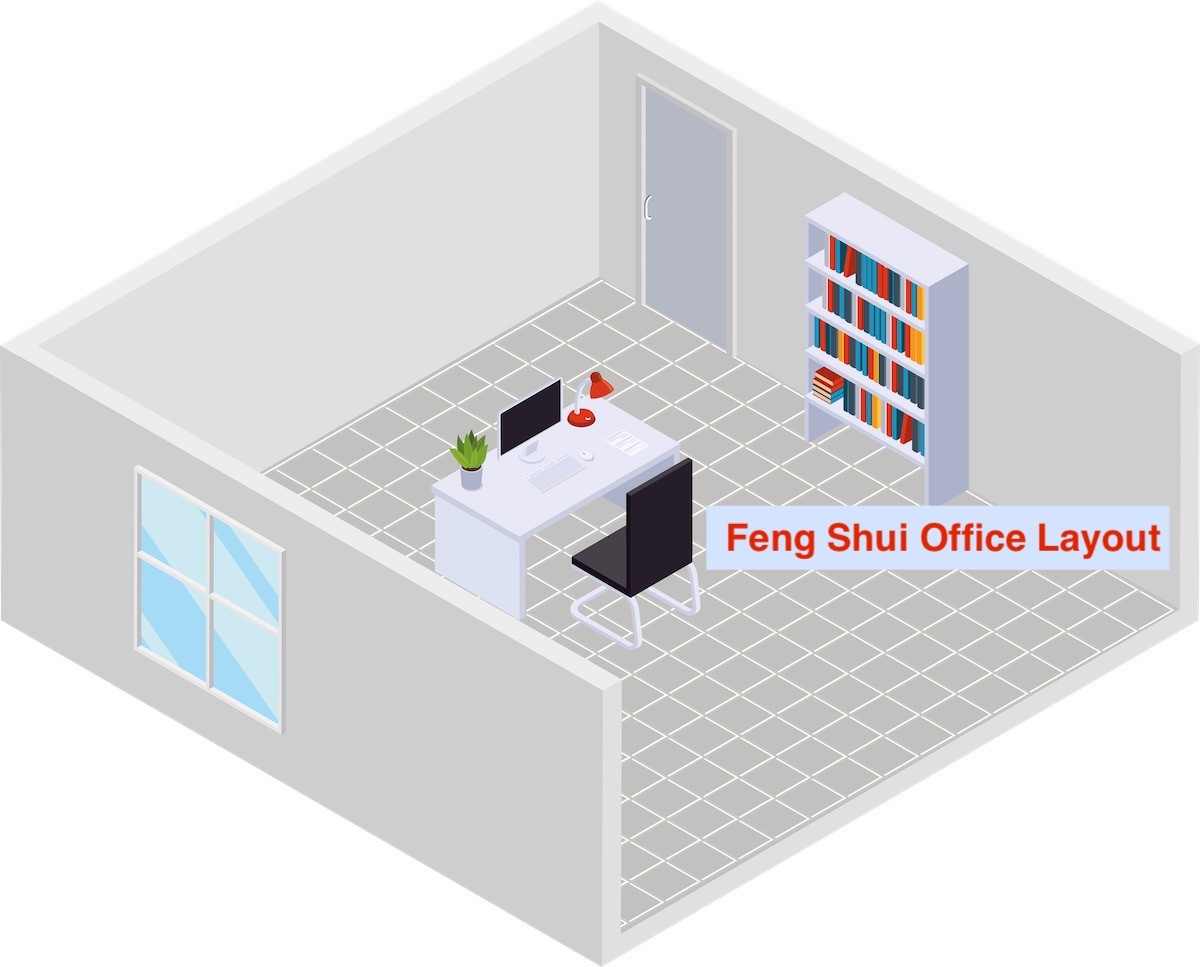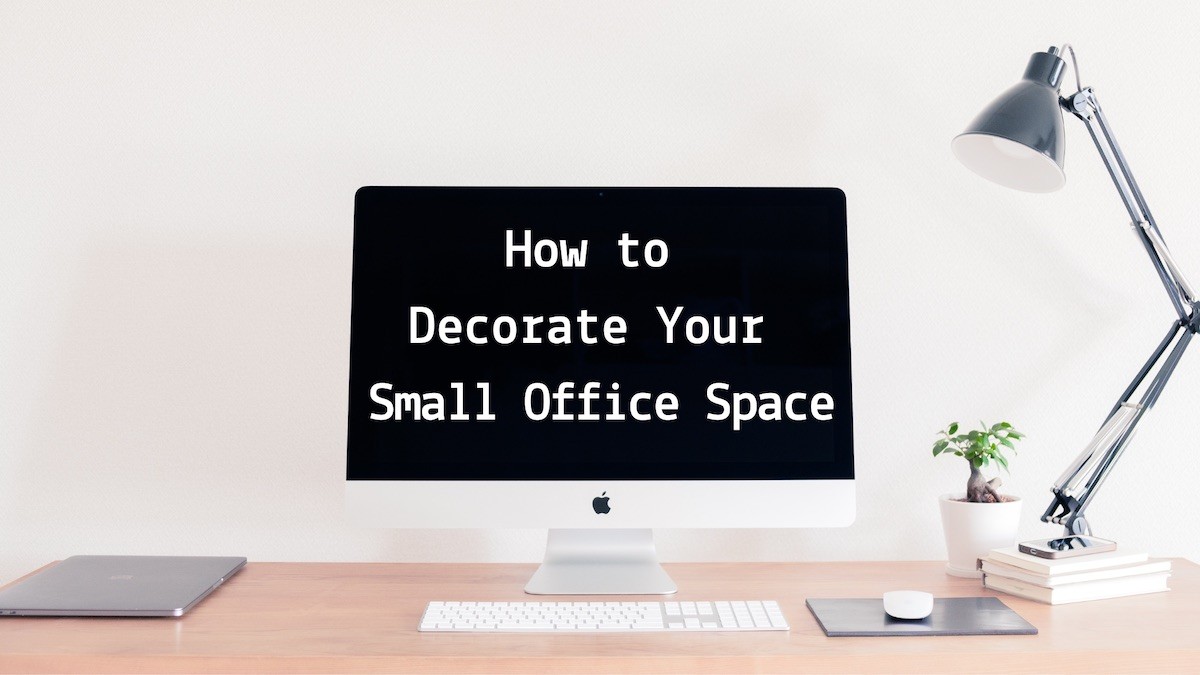Proper desk lamp placement is key to working and reading without straining your eyes. Light settings affect your productivity at work or in the study. That is why it is crucial that you place your lighting appointments and fixtures appropriately. So, where to put a Desk Lamp?
After you found a place where to put a desk it needs to decide where to place a lamp on the desk.
The way you glare at your notes and your desktop has something to do with the lights. And there is a rule of thumb on placing lamps at the correct height and position regardless of whether it is on your nightstand, home office desk, floor lamp, or even your favorite reading chair.
Desk lamps are great at illuminating limited spaces, especially when placed correctly. The ideal scenario is to have the bottom of the shade at about your chin's height when the lamp is switched on. This way, you will not look up directly at the lamp, and the light wouldn't shine on your face. Therefore, before placing your lamp on the desk, you have to figure out where your head will be at your workstation to plan its height accordingly.
They say you shouldn’t glare at electronic screens in pitch darkness, but what if your lamps can hurt your eyes too? Whereas some lamps have lumens enough to overstrain your eyes, read on to explore the fundamental aspects to consider when placing your lamp on the desk.
How should I place my desk lamp?
Page Contents
Placing a desk lamp appropriately is not an easy task.
Especially if you're trying to build an aesthetic minimalist desk setup.
And whether you work in a cubicle farm or home office, the quality and character of lighting in your workspace can enhance your productivity. Poor desk lighting can hamper your energy, cause severe eye strain headaches, e dampens your morale at work, and eventually hinder your overall ability to work effectively. The importance of a good lighting system can not be over emphasized, which is why you have to get it right on where and how to place a lamp on the desk.
Some office spaces lack the free benefit of natural light. If that is your scenario, then artificial lights are even more important when looking to install workspace illumination. Unlike workspaces at the office, most home offices have ambient lighting that could range from natural light, recessed lights to multifunctional overhead lights.
Nevertheless, it is not always a guarantee that such lighting will ensure sufficient light for your desk. That is in part because such ambient lighting isn’t designed for functional lighting at the office. And as such, you may be prompted to add additional sources of light like a lamp desk.
Important considerations when placing a desk lamp
The 15-inch rule
The recommended distance to place your desk lamp above your workspace is 15 inches. This will help reduce the eye strain caused by the excess brightness and light intensity. Furthermore, this is the appropriate distance that can spread the light evenly.
The height of the desk lamp
The height of the lamp is key in its placement. Usually, when your eyes are about 30 centimeters from your notes or keyboard, you can see clearly without necessarily having any eye fatigue. This position is not only great for your reading but also ensures that you have sufficient light to surround the area.
Intensity of light
If the lamp's light is too low, you can, of course, adjust and put it in a small range from your notes or keyboard and make the surroundings dark. However, this might eye fatigue and light source myopia.
How that happens is that a close light source causes the retention phenomenon of light in the retina of the eye. This increases the chances of your eye muscles contracting, hence accelerating the diminution of vision.
If the desk lamp is too bright, then you should adjust to a suitable intensity. On the other hand, if it is too dark, then you might not light your desk space sufficiently. As such, you will experience eye fatigue within no time. Overall, a light source that is too bright will make your eyes shrink, which may result in myopia or sore eyes.
Handedness
Most people write with their right hands. As such, it is a rule of the thumb that the desk lamp should be placed on the left side of their bodies facing the desk space. That is so because, with the lamp in that left side position, there would be no shadows caused by the hand while writing on a piece of paper. That said, let's look at some of the features to consider to make full use of desk lamps.
What are the features of a good desk lamp?
When purchasing desk lamps, few people think about the features. A proper desk lamp can be the difference-maker, especially if you are the type that ends up working late into the evenings. Some of the key features to look for include, but are not limited to:
Adjustable light intensity
With an adjustable desk lamp, it is easy to focus on a particular spot if that's what you desire. Besides, it is quite flexible as it allows the ease of placing on whichever side of the desk depending on what you deem is comfortable. When doing your studies on a computer, for instance, you can tap the light source to focus on your keyboard or the surroundings even when the home or overhead office lights are out.
Lighting type
All desk lamps have a lighting system, but different lamps offer different types of lighting. A desk lamp can be used for task lighting, ambient lighting, or accent lighting. Therefore, depending on the type of task at hand or in your daily job, it is vital that you determine the type of lighting that will be appropriate for your needs.
Height
A taller desk lamp will cover your desk's large surface area than a shorter desk lamp would. That said, depending on the space available on your desk or how many people will have access to it, you can decide to choose the best height that can cover the workspace surface.
A large workspace would require a taller lamp desk. That is also appropriate if you use your desk for multiple other tasks. But if you use your desk space for tasks that require minor tasks such as signing documents or paying bills, you will need to install a short desk lamp.
Lamp brightness
Desk lamps vary in levels of brightness. And this is dictated by the type of bulbs in use. Our eyes respond differently to brightness as we age. Experts say that an individual over the age of 50 would require nearly twice the amount of light a 20-year-old would need. Similarly, younger staff are comfortably glaring into bright light. On the other hand, older eyes are extra sensitive, and therefore, a desk lamp with a controllable beam could be ideal for staff over 50 years.
Types of adjustable desk lamps and where to place
Primarily, an adjustable desk lamp provides additional light to the desk workspace and the computer keyboard. When placing a desk lamp, the goal should be to position it in such a way that the light from the lamp does not reflect on the desktop screen.
Instead, the lamp should be placed in a way that eliminates all the hand shadows that could streak across your work. For those who are right-handed, the lamp should be placed on the left-hand side of their workspace. The reverse is true for those who write with their left hands. But overall, it is vital that you put the shine where you need it most.
USB desk lamps
If you want to keep your workstation, gaming table, or your home office table well lit, all you will need is a good desk lamp. Most of these lamps come with USB cables that can allow you to use them in office workspaces.
And that doesn't end there too. Even dorm rooms and small workspaces that are often notorious for bad lighting and scarcity of electrical outlets can take advantage of USB desk lamps to light up the workspaces.
The most important upside to adjustable USB lamps is that you don’t have to fill up your valuable office desk space with the lamp. Instead, you can place multifunctional floor lamps above the workspace and have them shine directly to your desk and the surroundings.
Appropriate home office desk lamp placement
The following are factors to consider when making placing a desk lamp on your home office table:
Should be task appropriate
Suppose your job involves computer work, filing systems, or other focus-intensive tasks. In that case, it is vital that you place your desk lamp in a well-defined position that will guarantee a reliable light source for the tasks you are doing. For instance, an articulated or adjustable desk lamp is ideal because it can focus light where you need it while simultaneously shining enough light to support other tasks.
If your home office workspace has multiple desk spaces, for instance, you can set up desk lamp lighting systems that focus on each workstation. This way, if you have a dedicated desk for filing, computer, and phone calls, you can set up a desk lamp for each station.
Ensure the light is indirect
For your eyes' health, it is vital that you desist from working in the direct glare of overhead light sources. Instead, it would help if you focused on mechanisms to minimize the ambient light that can illuminate your workstation.
Some opt for lampshades as they can soften or scatter the otherwise harsh light. Either way, the goal should be to illuminate the entire space without necessarily creating undue glare or contrast while at the same time avoiding the creation of shadows to streak your workspace.
Access to natural light sources
Many consider this a trivial matter when placing desk lamps. But do not underestimate the free benefit of access to natural light that permeates the windows from the skyline. Sunlight is the best natural light you can use to illuminate the workspace and improve the surrounding environment's overall lighting. However, you will want to be sure that you have enough and not too much light that can cause overwhelming glare, especially in the afternoons.
A good rule of thumb is to place your workstation in a north or south-facing location to avoid causing shadows throughout the day. But generally, it is vital to have natural light access most of your office so that you can still have enough light to work within the event of a power outage.
Additionally, you can avoid excess illumination glare at any part of the day if you use solar shades to soften or reduce the heat without necessarily compromising the natural light from the sun.
Position of your desk lamp
It is crucial to position your lamp in a direction that does not cause glare or shadows. A light source placed behind you or overhead will most likely cause reflections with your computer monitor.
Whatever the case might be, a good rule of thumb is that your desk lamp should be placed on the right-hand-side if you write with your left hand. The purpose of doing so is to avoid any unintended shadows around your workspace. Furthermore, you have to consider the location of your windows in the event of a power outage.
Accent or decorative lighting
Most people are likely to decorate their home offices as opposed to workplace stations. As such, most home offices will feature ambient lighting systems that are primarily aimed at illuminating the workspace and other specific workstations.
You may feel that decorating your office workspace is a good idea other than these common lighting types. And what better way to achieve that than use accent and decorative lighting? Either way, your goal would be to improve the visual character of your home office workspace.
The bottom line
Desk lamps are great at illuminating limited spaces, especially when placed correctly. As a rule of thumb, the ideal scenario is to have the bottom of the shade at about the height of your chin when the lamp is switched on. This way, you will not look up directly at the lamp, and the light wouldn't shine on your face. Therefore, before placing your lamp on the desk, you have to figure out where your head will be at your workstation so as to plan its height accordingly.
Some office spaces lack the free benefit of natural light. If that is your scenario, then artificial lights are even more important when looking to install workspace illumination. Unlike workspaces at the office, most home offices have ambient lighting that could range from natural light, recessed lights to multifunctional overhead lights.
Either way, if you want to keep your workstation, gaming table, or your home office table well lit, all you will need is a good desk lamp that is placed to ensure you have sufficient light to carry out your office tasks.


